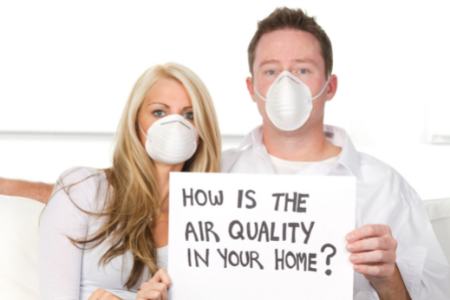
Your home is a place of comfort and security. However, is this possible with defective indoor air quality levels? During wildfire and allergy seasons, you may notice air quality alerts. These put you at risk for harmful effects from your outdoor air quality. Regardless, throughout the rest of the year, your home’s indoor toxins, pollutants, and chemicals could be worse than the outdoor air.
If you’re unfamiliar with how your home’s indoor air quality affects you, it’s critical to learn more. There are adverse health effects resulting from exposure to poor air quality, and you should monitor for various symptoms and conditions that can occur. This information will help you to avoid, prevent, and stop pollution in your home. Read on to understand some of the major indoor air pollutants and what you can do to keep your home clean and healthy.
Dust
Debris from outside, dead skin cells, pet dander, particles from clothing and food, and other materials around the house make up dust. For those who suffer from allergies, dust is among one of the worst triggers. Prolonged contact inside dusty homes for someone who has a dust allergy can be serious. Watch for common symptoms of dusty air, including:
- Bronchial infections
- Asthma attacks
- Dermatitis
- Wheezing and coughing
Volatile Organic Compounds (VOCs)
Many manufacturers include VOCs in their products, which can be toxic to your health. There are various areas of your home with VOC health risks:
- Chlorine bleach
- Carpets
- Wood products
- Plastic products
- Rubber products
- Petroleum-based products
- Paints and varnishes
- Glues
- Spot removers
These chemical compounds are a huge component of poor indoor air quality. While VOCs are not necessarily carcinogenic, they have increased the risks of kidney and liver cancer. They also make it difficult to breathe, cause nausea, and irritate the eyes, nose, and throat. VOCs are most threatening when they contaminate your water.
Asbestos
If you live in an older home, you may already know about the asbestos-containing materials (ACMs) that are commonly found in houses built before the 1980s. If you own a newer home, while they are far less likely to have ACMs, you should still know what they are and how they are dangerous. Since this is a fiber that can improve heat-resistance and soundproofing, asbestos was an ingredient in many home construction materials:
- Vinyl floor tiles
- Insulation
- Roofing shingles
- Cement
- Drywall
- Popcorn ceilings
- Cables and wires
Contained asbestos is generally safe. However, if the fibers scatter and become airborne, you could potentially inhale them. Asbestos is cancerous to humans when the fibers stick to the lungs and heart. Over time, this forms tumors, otherwise diagnosed as mesothelioma.
Environmental Tobacco Smoke
In homes with chronic smokers, secondhand smoke isn’t only bad for the user, but everyone else around them. Nicotine products have dangerous chemicals that you emit from both ends of the cigarette.
Studies show that secondhand smoke impacts you within the first five minutes. The damage can still happen after two hours, at which point you could develop cardiac problems or suffer a heart attack. Smoke is especially detrimental to children and pregnant women. You may have the following issues:
- Respiratory problems
- Heart diseases
- Lung, breast, brain, and liver cancer
- Ear infections
- Tooth decay
- Worsened eyesight
You may or may not have been aware of these pollutants in your home. The more knowledge you have about what causes indoor air health issues, the more you can prevent them from happening. Studying your own health, the health of cohabitants, and the materials in your home are important when determining if your home could possess harmful levels of air toxins. Your respiratory health plays a role in your physical health, and some diseases are the direct result of what your home is harboring behind walls or in the corners of rooms. Whether hiring an abatement professional in the case of asbestos (or other hazards like mold or radon), doing a deep cleaning, installing proper ventilation, or investing in air purifiers, cleaner air is often achievable.
Your home is a safe place. Keep it this way by introducing and maintaining healthy air levels. Even if you can’t control outdoor environments, you can do your best to improve the inside.
